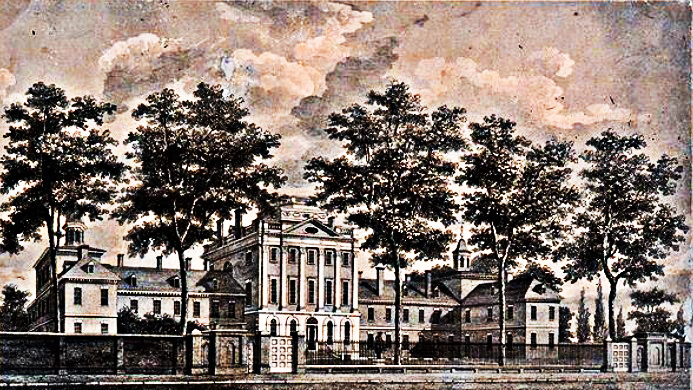
Apollo 13 oxygen tank explodes on April 13, 1970
The First Hospital Founded in the 13 Colonies in America: Pennsylvania Hospital was founded in 1751 by Dr. Thomas Bond and Benjamin Franklin “to care for the sick-poor and insane who were wandering the streets of Philadelphia.” At the time, Philadelphia was the fastest growing city in the 13 colonies. In 1730, the population numbered 11,500 and had grown to 15,000 by 1750 (the city continued to grow and by 1776, its 40,000 residents made Philadelphia the second largest English-speaking city in the British Empire).
The docks and wharves along the Delaware River teemed with activity as ships bound for foreign ports loaded up with flour, meat and lumber while overseas vessels delivered European-manufactured goods and wines. Foreign visitors noted with envy the city's growing prosperity. Although the majority of the population was neither extremely wealthy nor extremely poor, there was a significant increase in the number of immigrant settlers who were “aged, impotent or diseased”.
At the time, colonial America's urban centers were far healthier than their European counterparts. Nevertheless, the Philadelphia region, according to city leaders of the day, was “a melting pot for diseases, where Europeans, Africans and Indians engaged in free exchange of their respective infections”. Faced with increasing numbers of the poor who were suffering from physical illness and the increasing numbers of people from all classes suffering from mental illness, civic-minded leaders sought a partial solution to the problem by founding a hospital.
The idea for the hospital originated with Dr. Thomas Bond. Born in Calvert County, Maryland, Bond, a Quaker, moved to Philadelphia as a young man. In 1738, in order to further his medical education, he went abroad to study medicine in London. While in Europe, Bond spent time at the famous French hospital, the Hotel-Dieu in Paris, and became impressed with the continent's new hospital movement. Bond returned to Philadelphia in 1739 and two years later was appointed Port Inspector for Contagious Diseases.
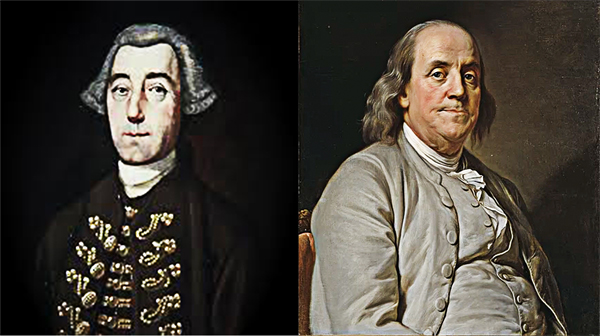
Bond and Benjamin Franklin were long-standing friends. Bond was a member of Franklin's Library Company and helped establish the American Philosophical Society and the Academy of Philadelphia, which evolved into the University of Pennsylvania.
Around 1750, Bond “conceived the idea of establishing a hospital in Philadelphia for the reception and cure of poor sick persons.” The idea was a novelty on this side of the Atlantic, and when Bond approached Philadelphians for support they asked him what Franklin thought of the idea. Bond hadn't approached his good friend because he thought it was out of Franklin's line of interest, but because of the reaction he received, Bond soon turned to Franklin. After hearing the plan, Franklin became a subscriber and strong supporter. Franklin's backing was enough to convince many others that Bond's projected hospital was worthy of support.
Franklin organized a petition, although not signed by him, bearing 33 names and brought it to the Pennsylvania Assembly on January 20, 1751. The petition stated that although the Pennsylvania Assembly had made many compassionate and charitable provisions for the relief of the poor, a small provincial hospital was necessary.
The hospital bill met with some objections from rural members of the Assembly because they thought the hospital would only be serviceable to the city. At this critical juncture, Franklin saved the day with a clever plan to counter the claim by challenging the Assembly that he could prove the populace supported the hospital bill by agreeing to raise 2000 pounds from private citizens.
Franklin's fundraising effort brought in more than the required amount. The Assembly signed the bill and presented it to Lieutenant Governor James Hamilton for approval. After amending the bill several times, Hamilton signed it into law on May 11, 1751.
Penn Medicine / Wikipedia /
Benjamin Franklin History.org
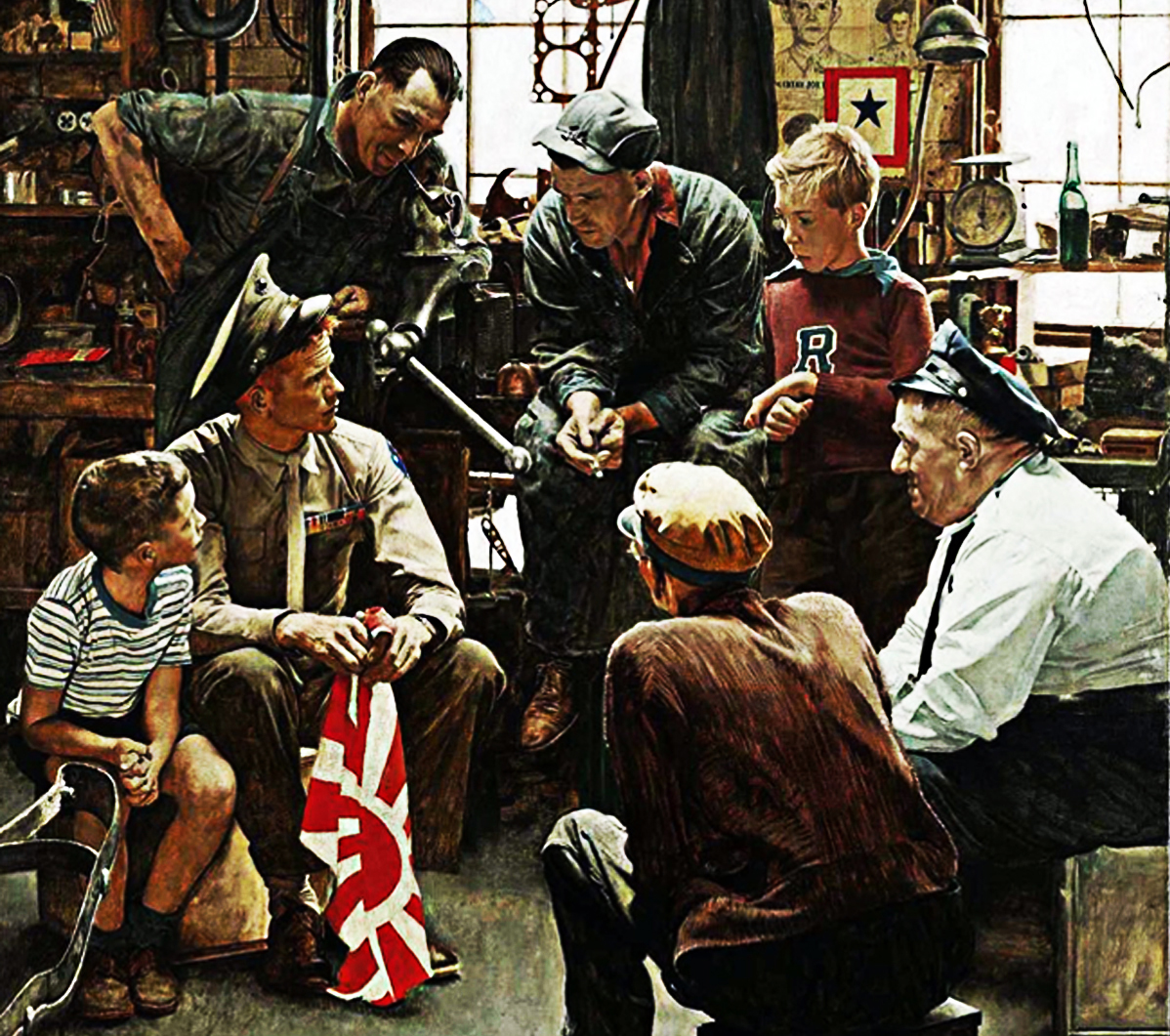
Understanding Military Terminology
Redeployment
(DOD) The transfer or rotation of forces and materiel to support another joint force commander’s operational requirements, or to return personnel, equipment, and materiel to the home and/or demobilization stations for reintegration and/or out-processing.
See also Deployment.
Joint Publications (JP 3-35) Deployment and Redeployment Operations
Red Team
(DOD) An organizational element comprised of trained and educated members that provide an independent capability to fully explore alternatives in plans and operations in the context of the operational environment and from the perspective of adversaries and others.
Joint Publications (JP 2-0) Joint Intelligence
Reduced Operating Status
(DOD) Military Sealift Command ships withdrawn from full operating status because of decreased operational requirements.
Also called ROS.
See also Military Sealift Command.
Joint Publications (JP 4-01.2) Sealift Support to Joint Operations
Reduction
(DOD) The creation of lanes through a minefield or obstacle to allow passage of the attacking ground force.
Joint Publications (JP 3-15) Barriers, Obstacles, and Mine Warfare for Joint Operations
Refraction
(DOD) The process by which the direction of a wave is changed when moving into shallow water at an angle to the bathymetric contours.
Joint Publications (JP 4-01.6) Joint Logistics Over the Shore
Joint Publication - Department of Defense Dictionary of Military and Associated Terms
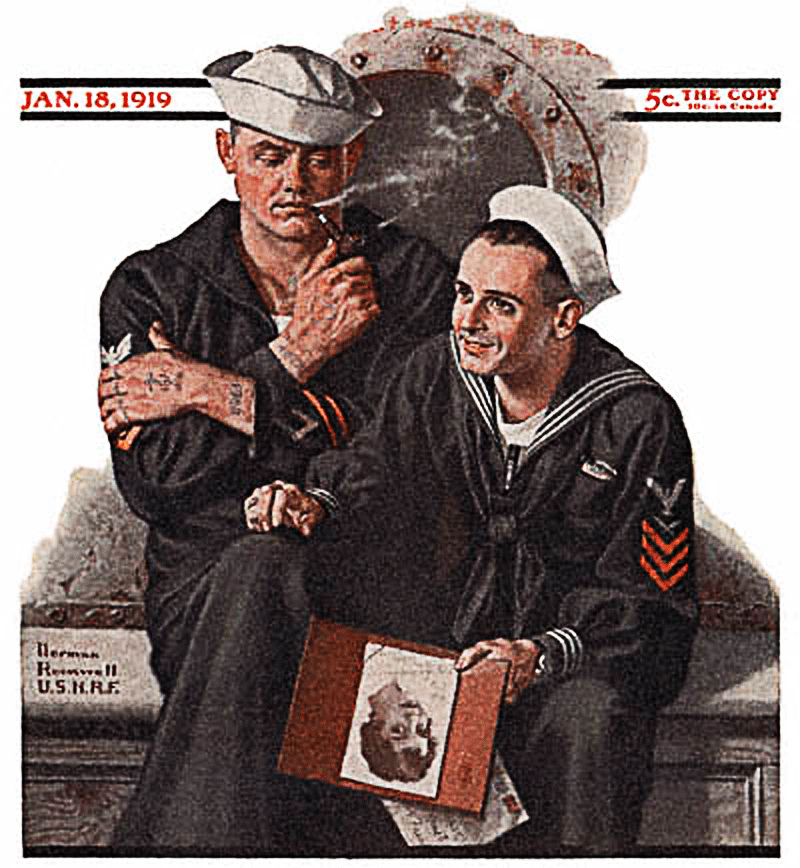
The Old Salt’s Corner
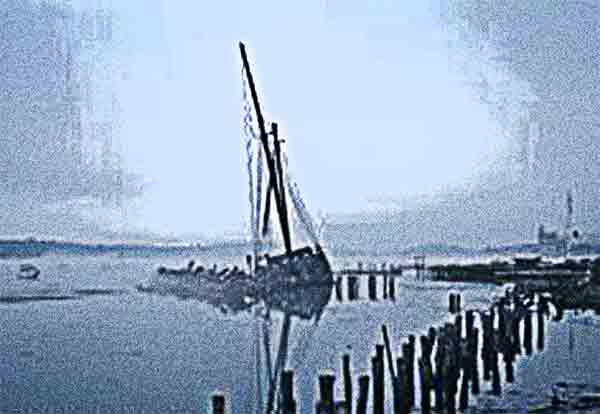
“Navy Blue”
My shipmate sleeps in his coat of Navy blue;
In a watery grave at sea lies the heart that beat so true.
He sank faint and weary among the honored brave,
As we laid him sad and lonely into his watery grave.
No more the bugle calls the weary one,
Rest, noble spirit, In thy grave below!
I’ll find you and know you, Among the good and true,
When a robe of white is giv’n for the coat of Navy blue.
He cried, give me water and just a little crumb,
And my mother she will bless you thro’ all the years to come;
Oh! tell my sweet sister, so gentle, good and true,
That I’ll meet her up in heaven, in my coat of Navy blue.
No more the bugle calls the weary one,
Rest, noble spirit, In thy grave below!
I’ll find you and know you, Among the good and true,
When a robe of white is giv’n for the coat of Navy blue.
Long, long years have vanished, and though he comes no more,
Yet my heart will startling beat with each footfall at my door;
I gaze o’er the dock where he waved a last adieu,
But no gallant lad I see, in his coat of Navy blue
No more the bugle calls the weary one,
Rest, noble spirit, In thy grave below!
I’ll find you and know you, Among the good and true,
When a robe of white is giv’n for the coat of Navy blue.
~ Author Unknown

“I’m Just Sayin”
“If you fell down yesterday, stand up today.”
“Beauty is in the heart of the beholder.”
“If we don't end war, war will end us.”
“The path of least resistance is the path of the loser.”
“Moral indignation is jealousy with a halo.”
“Human history becomes more and more a race between education and catastrophe.”
“The crisis of today is the joke of tomorrow.”
“Crime and bad lives are the measure of a State's failure,
all crime in the end is the crime of the community.”
“Affliction comes to us, not to make us sad but sober;
not to make us sorry but wise.”
“There's nothing wrong in suffering,
if you suffer for a purpose.
Our revolution didn't abolish danger or death.
It simply made danger and death worthwhile.”
~ H. G. Wells

“Thought for the Day”
“Whoever loveth me, loveth my hound.”
“An absolutely new idea is one of the rarest things known to man.”
“I would uphold the law if for no other reason but to protect myself.”
“Adults are obsolete children.”
“I die the king's faithful servant,
but God is first.”
“A little wanton money,
which burned out the bottom of his purse.”
“Life is really simple,
but we insist on making it complicated.”
“If honor were profitable,
everybody would be honorable.”
“See me safe up:
for in my coming down,
I can shift for myself.”
~ Thomas More

“What I Learned”
“Anything's possible if you've got enough nerve.”
“What's coming will come and we'll just have to meet it when it does.”
“Never trust anything that can think for itself if you can't see where it keeps its brain.”
“It does not do to dwell on dreams and forget to live.”
“Death is just life's next big adventure.”
“Poverty entails fear and stress and sometimes depression.
It meets a thousand petty humiliations and hardships.
Climbing out of poverty by your own efforts that is something on which to pride yourself,”
but poverty itself is romanticized by fools.”
“Imagination is not only the uniquely human capacity to envision that which is not,
and therefore the fount of all invention and innovation
In its arguably most transformative and revelatory capacity,
it is the power to that enables us to empathize with humans whose experiences we have never shared.”
~ J. K. Rowling
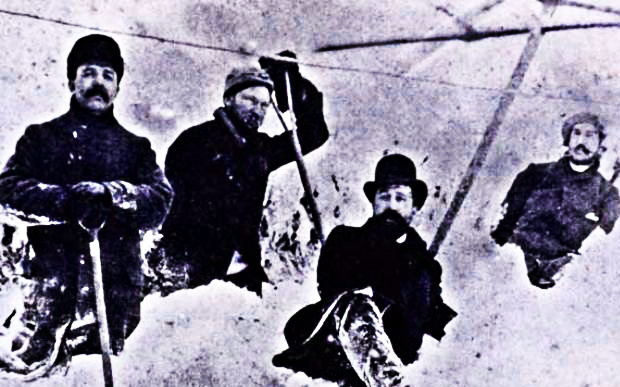
Mr. Answer Man Please Tell Us: How Were Roads Cleared Before Snowplows?
America's first settlers were not so well-equipped to deal with the New World's snowy winters. During the 1717 storm (four feet of snow dumped, with drifts of up to 25 feet in some places), only a solitary postman was able to make the trip from Boston to New York. His trick? Abandoning his horse for a pair of snow shoes.
Back then, plowing wasn't in the picture. Instead, residents affixed ski-like runners to their carts to move through the icy streets.
But urban development brought with it streets, and people who needed to get through them. Residents depended on regular deliveries of food and fire wood. When snow made transport impossible, they would dig themselves out in de-facto teams to allow sleigh traffic to pass through. Though ordinances in many cities required homeowners to clear snow off their sidewalks, snow removal was not yet practiced on a citywide basis.
That changed in the 1840s, when the first snow plow patent was issued. According to a wonderfully comprehensive history by the National Snow and Ice Data Center, the first snow plow was deployed in Milwaukee in 1862. They write that the plow “was attached to a cart pulled by a team of horses through the snow-clogged streets”.
Over the next several years, other cities adopted the horse-drawn plow, along with a sense that snow removal was a city's problem. As the Data Center notes “the invention of the snow plow initiated widespread snow removal efforts in cities and also created a basis for municipal responsibility in snow removal.”
Of course, with great plowing comes great responsibility. Cities were able to clear main streets, but side streets and sidewalks often ended up blocked off by huge mounds of snow. Again, according to the National Snow and Ice Data Center, businessmen and townsfolk “complained and even brought lawsuits against the plowing companies ... [claiming] their storefronts were completely blocked with mounds of plowed snow, making them inaccessible to their customers.”
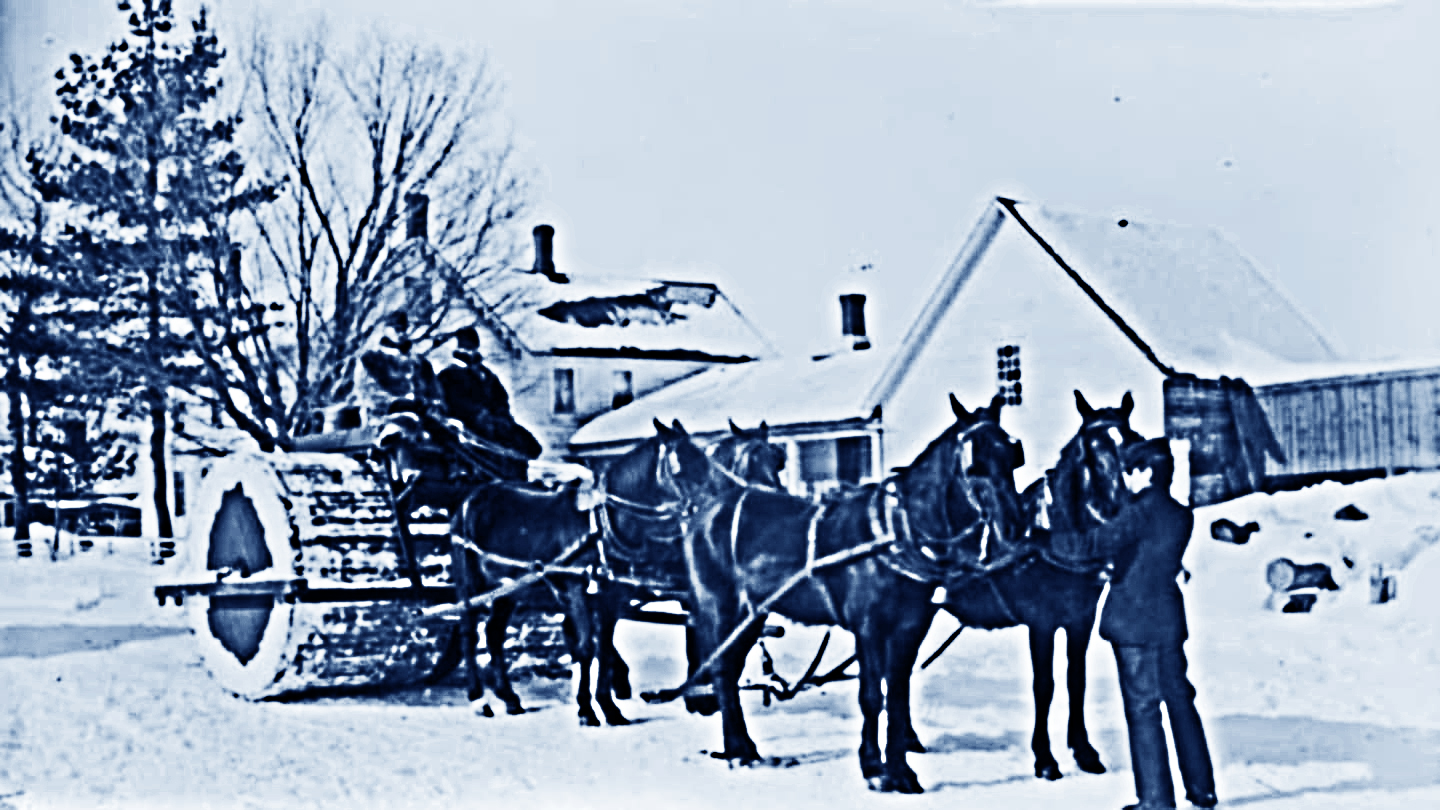
New York handled this by hiring horse-drawn carts and teams of shovelers to work in conjunction with the plows.
However, these advances were no match for the Blizzard of 1888, which paralyzed cities. Some areas saw as much and four feet of snow, trapping people in their homes (or in one tragic case, in a train bound for New York City) for days on end.
But the storm had an upside - it led cities to develop more comprehensive snow plans. Cities began plowing when storms started, rather than waiting until the end of the storm. Officials divided cities into sections and assigned different areas to different plow drivers.
Some cities even tried equipping their electric trolleys with plows, which didn't work so well.
In the early 20th century, the automobile entered the picture, creating new problems and new possibilities for snow plowing. In 1913, New York unveiled the first motorized dump truck (complete with tractor tires), abandoning the traditional horse-drawn cart.
In the 1920s, Chicago unveiled the snowloader, an “ingenious contraption” that “was equipped with a giant scoop and a conveyor belt. As the snow was plowed, it was forced up the scoop, caught by the conveyor belt which carried it up and away from the street into a chute at the top where it was dropped into a dump truck parked underneath.”
The last major innovation to snow removal came mid-century. In 1959, space technology entered the snow removal effort. Satellites allowed for more accurate storm forecasting and quicker preparation.
The Atlantic - CityLab
• Marketplace.org
• Mental Floss
• Quora
• Wikipedia

NAVSPEAK aka U.S. Navy Slang
Ahead Flank Liberty: The fictitious speed at which a ship travels after a mission or patrol is completed with high marks and the ship is headed into very nice foreign ports that cater to visiting U.S. Forces.
AIMD: ADministrative SEParation: Release from Naval Service for administrative reasons. (The list of reasons is very extensive and can be found in BUPERSINST 1900.8C, Enclosure (2).)
AD: Aviation Machinist Mate, one who throws wrenches at aircraft and prays to mech gods for a favorable outcome.
AE: Aviation Electrician's Mate.
A-Farts: (AFRTS) Armed Forces Radio & Television Service. A-Farts is received via satellite all over the world and offers a variety of shows.
Some of the most entertaining offerings are the propaganda commercials it frequently airs since regular advertising is not permitted.
AFRTB: Airframes Runs This Bitch) Term commonly used among AM's.
AFTA: Advanced First Term Avionics: Part of the advanced electronics schooling package, reserved for AT's AQ's and AX's for advanced training. Basically, they taught the PO2 exam for 6 months.
A-Gang: The Auxiliaries Division of the Engineering Department. Members are known as “A-Gangers”. Also called “Fresh Air Snipe”.
Wiktionary.org

Just for you MARINE
Air Crew: Personnel that work on board any aircraft that can carry a crew (i.e. UH-1, CH-46, CH-53, V-22, etc.), and are normally charged with loading gear, passengers, and manning the door/ tail guns.
Air Force Pockets or Army Gloves: An individual's hands being inside his or her pockets.
ALICE: All-purpose Lightweight Individual Carrying Equipment, a form of combat gear still in occasional use in some Marine activities, replaced by MOLLE and ILBE.
Wikipedia.org

Naval Aviation Squadron Nicknames
Navy Rotary Wing Weapons School Other Rotary Wing Aircraft Units - nicknamed the “SEAWOLF”
United States Navy - Naval Air Station Fallon, Near Fallon, Nevada
Wikipedia.org

Where Did That Saying Come From?

“Hair of the dog that bit you:” Meaning: A small measure of drink, intended to cure a hangover.
Origin: The fuller version of this phrase, that is, 'the hair of the dog that bit me', gives a clue to the source of the name of this supposed hangover cure. That derivation is from the medieval belief that, when someone was bitten by a rabid dog, a cure could be made by applying the same dog's hair to the infected wound. How many people managed to get bitten again when trying to approach the aforesaid dog to acquire the hair to achieve this completely useless remedy isn't known. The knowledge of the derivation should at least put paid to the frequent 'hare of the dog' misspelling.
With most metaphorical phrases that have a literal origin, for example toe the line and on the warpath, the later figurative use doesn't become popular until the literal use has fallen out of use. 'The hair of the dog' is unusual in that the figurative version is recorded before any known examples of the literal meaning.
John Heywood, in his early text, A dialogue conteinyng the nomber in effect of all the prouerbes in the Englishe tongue, 1546, uses the phrase with a clear reference to drinking:
“I pray thee let me and my fellow have
A hair of the dog that bit us last night -
And bitten were we both to the brain aright.
We saw each other drunk in the good ale glass.”
Another useful text, Randle Cotgrave's A dictionarie of the French and English tongues, 1611, also records the 'drinking' version of the expression:
“Our Ale-knights [habitual drinkers] often use this phrase, and say, Give us a haire of the dog that last bit us.”
It isn't until the 18th century that the literal use of dogs' hair to cure bite wounds is recorded in print. Robert James alludes to the method in A Treatise on Canine Madness, 1760:
“The hair of the dog that gave the wound is advised as an application to the part injured.”
In fact, James is rather skeptical about the treatment, preferring another commonly believed but equally unpromising remedy - the application of the ashes of river crabs.:
Whilst the hair of the dog that bit us is now dismissed as an effective rabies treatment, the taking of additional alcohol to cure a hangover has some scientific basis. The symptoms of hangover are partly induced by a withdrawal from alcohol poisoning. A small measure of alcohol may be some temporary relief, even if in the longer term it makes the hangover worse.
Phrases.org UK

Science & Technology

FEATURE: New results from NASA's DART planetary defense mission confirm we could deflect deadly asteroids
• Most detailed geological model reveals Earth's past 100 million years
Tracing the history of grape domestication using genome sequencing
• Giving plants animal antibodies to help them ward off diseases
• Students ate less meat in the three years after hearing talk on its negative environmental impacts
Determining the tempo of evolution across species
• Destroying the superconductivity in a kagome metal
• Illuminating the evolution of social parasite ants
Can the dogs of Chernobyl teach us new tricks on survival?
• Simple techniques to quantify Lithium (Li) plating and speed up the charging of Li-ion batteries
• Study reveals link between selenium and COVID-19 severity
Phys.org / MedicalXpress / TechXplore
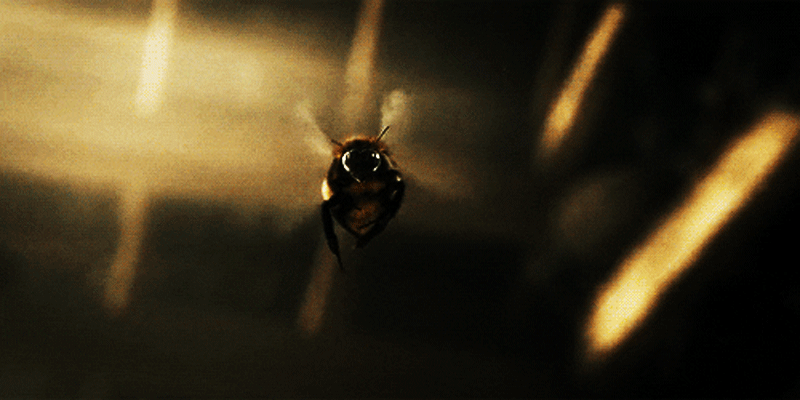
FEATURE: Bees follow linear landmarks to find their way home, just like the first pilots
• NASA captures sequestered carbon of 9.9 billion trees with deep-learning and satellite images
Stick to your lane: Hidden order in chaotic crowds
• Flat, pancake-sized metalens images lunar surface in an engineering first
• Most detailed geological model reveals Earth's past 100 million years
The world's first horse riders found near the Black Sea
• Molecular atlas of spider silk production could help bring unparalleled material to market
• Tracing the history of grape domestication using genome sequencing
Temperature-stable tuberculosis vaccine safe, prompts immune response in first-in-human trial
• The next pandemic: Researchers develop tool to identify existing drugs to use in a future outbreak
• Scientists discover answer to the mystery of cloudy filters on satellites
Phys.org / MedicalXpress / TechXplore

Bizarre News (we couldn’t make up stuff this good - real news story)
“Runaway” black hole the size of 20 million suns caught speeding through space with a trail of newborn stars behind it
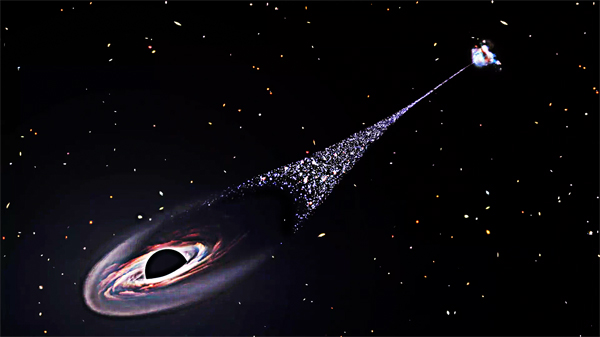
Astronomers have discovered a “runaway” black hole, potentially the first observational evidence that supermassive black holes can be ejected from their host galaxies.
Astronomers have spotted a runaway supermassive black hole, seemingly ejected from its home galaxy and racing through space with a chain of stars trailing in its wake.
According to the team's research, which was published April 6 in The Astrophysical Journal Letters, the discovery offers the first observational evidence that supermassive black holes can be ejected from their home galaxies to roam interstellar space.
The researchers discovered the runaway black hole as a bright streak of light while they were using the Hubble Space Telescope to observe the dwarf galaxy RCP 28, located about 7.5 billion light-years from Earth.

Follow-up observations showed that the streak measures more than 200,000 light-years long - roughly twice the width of the Milky Way - and is thought to be made of compressed gas that is actively forming stars. The gas trails a black hole that is estimated to measure 20 million times the mass of the sun and is speeding away from its home galaxy at 3.5 million mph (5.6 million km/h), or roughly 4,500 times the speed of sound. This is fast enough to travel from Earth to the moon in about 14 minutes, according to a NASA statement.
According to the researchers, the streak points right to the center of a galaxy, where a supermassive black hole would normally sit.
“We found a thin line in a Hubble image that is pointing to the center of a galaxy”, lead study author Pieter van Dokkum, a professor of physics and astronomy at Yale University, told Live Science. "Using the Keck telescope in Hawaii, we found that the line and the galaxy are connected. From a detailed analysis of the feature, we inferred that we are seeing a very massive black hole that was ejected from the galaxy, leaving a trail of gas and newly formed stars in its wake.”

Confirming the tail of an ejected black hole
Most, if not all, large galaxies host supermassive black holes at their centers. Active supermassive black holes often launch jets of material at high speeds, which can be seen as streaks of light that superficially resemble the one the researchers spotted. These are called astrophysical jets
To determine this isn't what they observed, van Dokkum and the team investigated this streak and found it didn't possess any of the telltale signs of an astrophysical jet. While astrophysical jets grow weaker as they move away from their source of emission, the potential supermassive black hole tail actually gets stronger as it progresses away from what seems to be its galactic point of origin, according to the researchers. Also, astrophysical jets launched by black holes fan out from their source, whereas this trail seems to have remained linear.
The team concluded that the explanation that best fits the streak is a supermassive black hole blasting through the gas that surrounds its galaxy while compressing that gas enough to trigger star formation in its wake.
“If confirmed, it would be the first time that we have clear evidence that supermassive black holes can escape from galaxies”, van Dokkum said.

Black holes on the move
Once the runaway supermassive black hole is confirmed, the next question that astronomers need to answer is how such a monstrous object gets ejected from its host galaxy.
“The most likely scenario that explains everything we've seen is a slingshot, caused by a three-body interaction”, van Dokkum said. “When three similar-mass bodies gravitationally interact, the interaction does not lead to a stable configuration but usually to the formation of a binary and the ejection of the third body.”
This might mean that the runaway black hole was once part of a rare supermassive black hole binary, and during a galactic merger, a third supermassive black hole was introduced to this partnership, flinging out one of its occupants.
Astronomers aren't sure how common these massive runaways are.
“Ejected supermassive black holes had been predicted for 50 years but none have been unambiguously seen”, van Dokkum said “Most theorists think that there should be many out there.”
Further observations with other telescopes are needed to find direct evidence of a black hole at the mysterious streak's tip, van Dokkum added.
Related: James Webb Space Telescope discovers oldest black hole in the universe - a cosmic monster 10 million times heavier than the sun
New type of black hole found lurking in Earth's “cosmic backyard” is closest ever discovered
EIGHT ways we know that black holes really do exist
NINE ideas about black holes that will blow your mind
TEN most massive black hole findings from 2022
Live Science (02/26/2023) 


SONG FACTS

“Heroes”  - David Bowie
- David Bowie
Album: Heroes
Released 1977 
“Heroes”  tells the story of a German couple who are so determined to be together that they meet every day under a gun turret on The Berlin Wall.
David Bowie, who was living in Berlin at the time, was inspired by an affair between his producer Tony Visconti and backup singer Antonia Maass, who would kiss “by the wall” in front of Bowie as he looked out of the Hansa Studio window.
tells the story of a German couple who are so determined to be together that they meet every day under a gun turret on The Berlin Wall.
David Bowie, who was living in Berlin at the time, was inspired by an affair between his producer Tony Visconti and backup singer Antonia Maass, who would kiss “by the wall” in front of Bowie as he looked out of the Hansa Studio window.
David Bowie didn't mention Visconti's role in inspiring this song until 2003, when he told Performing Songwriter magazine:
"I'm allowed to talk about it now. I wasn't at the time. I always said it was a couple of lovers by the Berlin Wall that prompted the idea.
Actually, it was Tony Visconti and his girlfriend. Tony was married at the time. And I could never say who it was (laughs).
But I can now say that the lovers were Tony and a German girl that he'd met whilst we were in Berlin.
I did ask his permission if I could say that. I think possibly the marriage was in the last few months, and it was very touching because I could see that Tony was very much in love with this girl, and it was that relationship which sort of motivated the song.”
Bowie moved to Berlin after burning out from touring and fame. He rented a cheap apartment above an auto-repair shop, which is where he wrote this album.
Robert Fripp, formerly of
King Crimson, played guitar on this track.
His band, King Crimson, performed the song at the Admiralspalast in Berlin on September 11, 2016 in celebration of Bowie.
This version  was released on an EP called Heroes in 2017.
was released on an EP called Heroes in 2017.
Brian Eno, formerly of Roxy Music, helped Bowie write and produce this. Eno moved to Berlin with Bowie and worked on his albums Low, Heroes, and Lodger.
These albums were much more experimental and less commercial than Bowie's previous work, but they still sold well in England.
Co-writer Eno said of this in the April 2007 Q Magazine:
“It's a beautiful song. But incredibly melancholy at the same time. We can be heroes, but actually we know that something's missing, something's lost.”
Bowie released versions of this song in English, German, and French. The German version is called
“Helden”  ;
the French is
“Héros”
;
the French is
“Héros”  .
.
Featured in this song are not only Brian Eno's synthesizer and Robert Fripp's guitar, but also producer Tony Visconti banging on a metal ashtray that was lying around the studio.
This song is featured in the films Christiane F (1981) and The Parole Officer (2001). It also ended up as a Microsoft commercial theme.
Bowie played this at
Live Aid from Wembley Stadium, England in 1985  , and also at the
Berlin Wall in 1987
, and also at the
Berlin Wall in 1987  . Regarding the later performance, Bowie said in his Performing Songwriter interview:
. Regarding the later performance, Bowie said in his Performing Songwriter interview:
“I'll never forget that. It was one of the most emotional performances I've ever done. I was in tears. They'd backed up the stage to the wall itself so that the wall was acting as our backdrop. We kind of heard that a few of the East Berliners might actually get the chance to hear the thing, but we didn't realize in what numbers they would.
And there were thousands on the other side that had come close to the wall. So it was like a double concert where the wall was the division. And we would hear them cheering and singing along from the other side. God, even now I get choked up. It was breaking my heart. I'd never done anything like that in my life, and I guess I never will again.
When we did 'Heroes' it really felt anthemic, almost like a prayer. However well we do it these days, it's almost like walking through it compared to that night, because it meant so much more. That's the town where it was written, and that's the particular situation that it was written about. It was just extraordinary.
We did it in Berlin last year as well - “Heroes’ - and there's no other city I can do that song in now that comes close to how it's received. This time, what was so fantastic is that the audience - it was the Max Schmeling Hall, which holds about 10-15,000 - half the audience had been in East Berlin that time way before.
So now I was face-to-face with the people I had been singing it to all those years ago. And we were all singing it together. Again, it was powerful. Things like that really give you a sense of what performance can do. They happen so rarely at that kind of magnitude. Most nights I find very enjoyable
.
These days, I really enjoy performing. But something like that doesn't come along very often, and when it does, you kind of think, ‘Well, if I never do anything again, it won't matter.’”
Continued ...
MORE SONGS
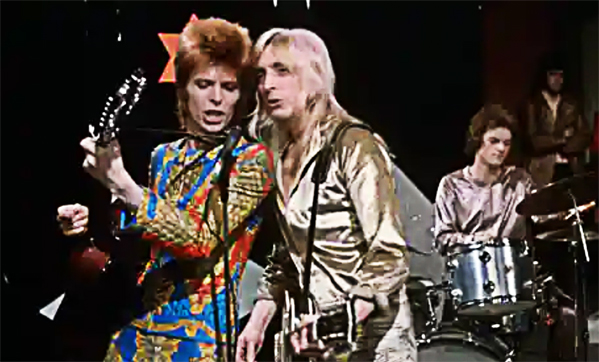
1969
“Space Oddity”  Live
Live  Video
Video 
1971
Life on Mars?  Live
Live  Video
Video 
“Changesg”  Live
Live  Video
Video 
1972
“Starman”  Live
Live  Video
Video 
“Ziggy Stardus”  Live
Live  Video
Video 
“Heroes” - David Bowie 1967 Continued ...
David Bowie official site (David Bowie Discography) / Rock & Roll Hall of Fame / Billboard / All Music / Song Facts /
Ultimate Classic Rock / David Bowie
Image: “Heroes (album)” by David Bowie
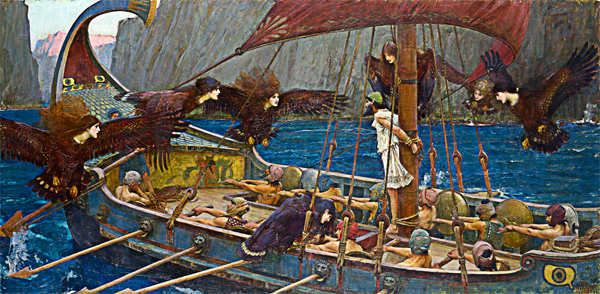
Trivia
● In Greek mythology, “Sirens” were represented as a combination of woman and what animal?
Answer to Trivia
READ MORE: Audubon.org
● What was the first live-stream video on the internet?
Answer to Trivia
READ MORE: History of the Internet.org
s
● What tropic passes through Australia?
Answer to Trivia
READ MORE: PacIOOS.Hawaii.edu
● What does the Schmidt index measure?
Answer to Trivia
READ MORE: History.com

A Test for People Who Know Everything
From the Jeopardy Archives Category - “MAY DAY! MAY DAY!” (Alex: We'll give you the ship; you give us the literary work it appears in.) ($200)
“On May 1, 1967 he married Priscilla Beaulieu at the Aladdin Hotel in Las Vegas.”
Answer to Jeopardy READ MORE: Las Vegas Review Journal
From the Jeopardy Archives Category - “MAY DAY! MAY DAY!” ($400)
“350,000 workers responded on May 1, 1886 as the AFL declared a national strike in favor of this workday length.”
Answer to Jeopardy READ MORE: University of Maryland.edu
From the Jeopardy Archives Category - “MAY DAY! MAY DAY!” ($600)
“Until May 1, 2008 Washington, D.C.'s cabs didn't have these; they used a zone system instead.”
Answer to Jeopardy READ MORE: Forbes
From the Jeopardy Archives Category - “MAY DAY! MAY DAY!” ($800)
“On May 1, 1961 in the first major one of these in the U.S., a Miami-Key West flight made an unscheduled stop in Cuba.”
Answer to Jeopardy READ MORE: Office of The Historian.gov
From the Jeopardy Archives Category - “MAY DAY! MAY DAY!” ($1,000)
“On May 1, 1898 the U.S. Navy fired when ready & sank the Spaniards at the battle of this bay.”
Answer to Jeopardy READ MORE: History.com

Joke of the Day
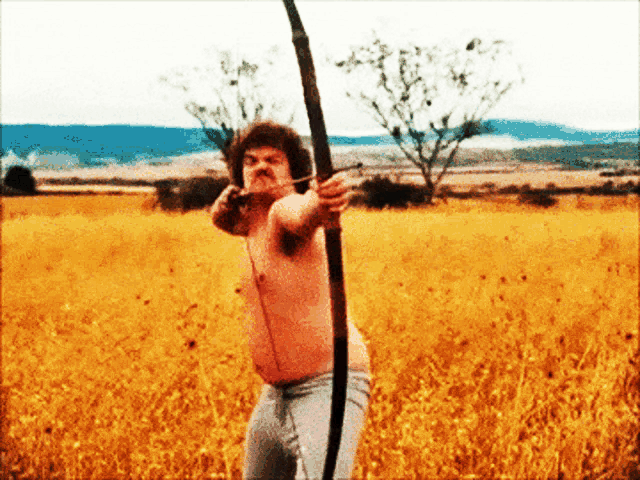
“Child Pretends To Shoot Student With Imaginary Bow, Suspended For THREE Day”
Broken Bow parents Matthew and Martha Miele have claimed that their six-year-old son was suspended for three days from “Our Lady of The Broken Windows” School in Broken Bow, Ohio, because he pretended to aim and shoot an imaginary bow and arrow at a classmate during recess.
Matthew Miele told Broken Bow television station BBOW that he didn't “see anything wrong” with the behavior, but the school maintained a “zero tolerance policy toward threatening gestures”:
Parents are mad that a Catholic school suspended their 6-year-old son for pretending to shoot an imaginary bow and arrow at recess.
“I don't see anything wrong with the way he was playing”, said the father, Matthew Miele.
Miele said his son served the second day of his three-day punishment at “Our Lady of The Broken Windows” School in Broken Bow. He wants the school to drop the issue.
“The punishment is so severe that it’s hard, as a parent, to make this a teachable moment for our kid so that we can move forward. I think we have to lose this. It sounds a little editorial, possibly like they're using our platform to teach that lesson”, Miele said.
Miele said his son was playing outside when a teacher saw what he was doing and brought it to the principal's attention. That's when Matthew's son was called to the principal's office.
Martha Miele told another Broken Bow television station, BBOW, that she called Principal Joe Crachiolo to ask if the suspension could be reconsidered:
“I didn't really understand. I had him on the phone for a good amount of time so he could really explain to me what he was trying to tell me. My question to him was “Is this really necessary? Does this really need to be a three-day suspension under the circumstances that he was playing and he's 6 years old'”
“He told me that he was going to stand firm and that he was not going to change it”, Martha Miele said.
BBOW reported that Crachiolo e-mailed the Mieles about the disciplinary action, later referencing a letter sent to parents (but not specifying whether the letter was sent to all parents of students at “Our Lady of The Broken Windows”):
The school's principal Joe Crachiolo was alerted to the incident after a teacher spotted him pretending to be a Power Ranger as he was playing outside with friends.
The parents say they encourage their son to use his imagination as much as possible, and are frustrated that their pleas for their son's suspension to be reconsidered fell on deaf ears.
Crachiolo sent a letter home to parents stating in part:
“I have no tolerance for any real, pretend, or imitated violence. The punishment is an out of school suspension.”
The content of the e-mail sent to the Mieles by Crachiolo wasn't detailed in any news reports of the incident, nor was it confirmed the “threatening gesture” in question involved nothing more than pretending to shoot a bow and arrow. Principal Crachiolo stated that the school prohibited all violent actions and referenced “games” and "shooting" but wasn't specifically quoted as denoting that the student's imitating the use of a bow and arrow was the sole action that prompted disciplinary consequences:
”Recently, there have been some 'games' being played during recess time. These various games have involved students pretending to 'shoot' other students”, he wrote.
“These games are not appropriate in a Catholic school or any other school setting. It is not “fun” and certainly not Catholic to pretend to harm another person.”
Although the Mieles provided their version of events to several news outlets (and it was widely picked up by several more), the school hasn't confirmed the reason for the boy's suspension to the media. When asked about it by BBOW, the archdiocese simply stated they “cannot comment on disciplinary issues involving a minor”.
WLWT, Westwood































